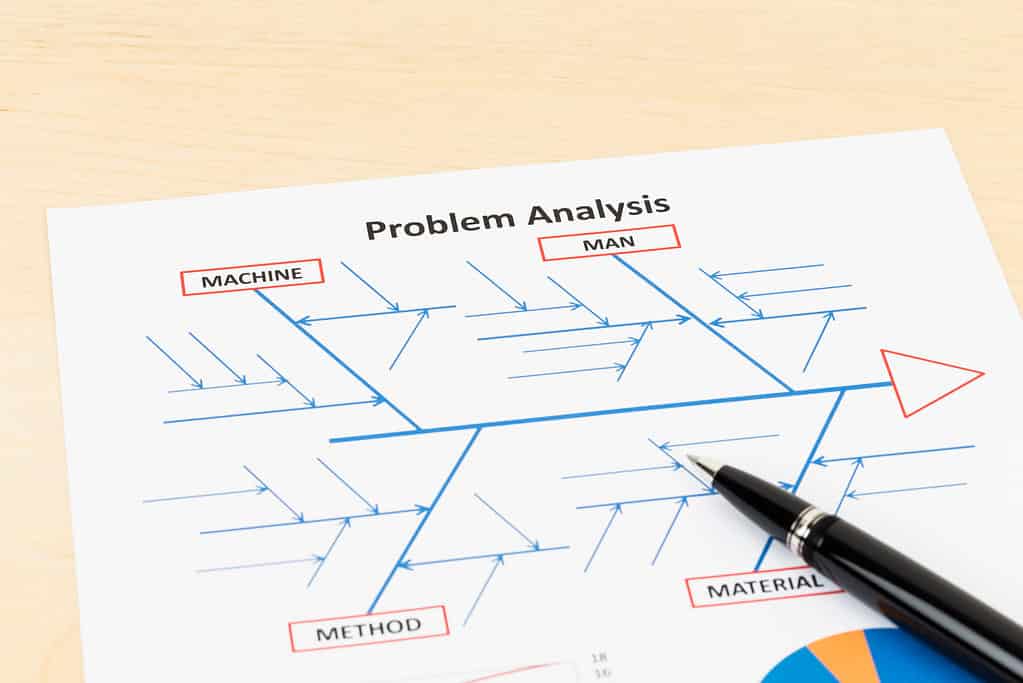Category: Methodology

What are Transformations? A Complete Guide
Updated:Many statistical tools have an assumption of normality. Is there an option if my data is not normal? Transforming your data might help. Some statistical methods, such as hypothesis testing, have an underlying assumption of normality of your data before they can be used. Although control charts are generally robust to normality issues, sometimes the […]
Read more »
Sampling
Updated:It is often not possible or practical to collect all the data from your process. It can be too costly or take too much time. It may not be possible to access all the data. If this situation exists in your process, then you will need to sample your data. Overview: What is sampling? There […]
Read more »
What You Need to Know About ISO 9000 Series of Standards
Updated:ISO 9000 is a series of standards, developed and published by the International Organization for Standardization (ISO). It defines, establishes, and maintains an effective quality management system for manufacturing and service industries. Overview: What is the ISO 9000 series? ISO 9000 is a series of individual standards. The core standards contained within the series are: […]
Read more »
Make Informed Decisions with Quantitative Data
Updated:There are two broad categories of data in statistics: quantitative data and categorical data. Quantitative data is something you measure or count while categorical data presents data in categories or groups rather than the actual values themselves. Overview: What is quantitative data? Quantitative data describe values and numbers which are measured or counted and can […]
Read more »
The Dos and Don’ts of Conducting Root Cause Analysis
Updated:In the context of Six Sigma and Continuous Improvement, a root cause is defined as an issue or factor that causes a nonconformance or defect which, if eliminated, will improve the process. The root cause is the base issue which sets a cause-and-effect reaction in motion eventually resulting in a problem. Overview: What is root […]
Read more »
Recommitment to Six Sigma Achieves Maximum Results
Published:Honeywell was a company that had been utilizing the Six Sigma methodology for years. Distracted by a merger and other factors, however, the organization had begun to slip. With a revitalized stake in the Six Sigma process, the organization was able to turn itself around and become even stronger than before. DMAIC and Y=f(x) Helped […]
Read more »
Successful Reinvention Focused on Customers and Quality
Published:In 2008, Starbucks was taking a major hit from the financial crisis, losing customers to competitors, and having to close hundreds of stores. Despite having its back against the wall, some decisions made around key Six Sigma principles helped Starbucks bounce back better than ever. How Giving Quality and a Better Experience To Employees and […]
Read more »
The 2.67 Million Dollar Mystery (And How 5 LSS Tactics Solved It)
Published:This major beverage manufacturer was spending millions of dollars per year to replace recyclable plastic shells to transport 2-liter bottles from the plant to their customers. Where did all the plastic shells go? Let’s find out. The process of retrieving delivered plastic shells from the customer should have been easy, but apparently it wasn’t. The […]
Read more »
Following the Road to Improvement
Published:As a recently promoted Vice President, Chuck needed to quickly understand what all his people were doing. Chuck, a longtime employee of a major utility company, had been recently promoted to Vice President to take over the leadership of a wide range of different functions than what he had been managing. As a result of […]
Read more »
Six Thinking Hats
Published:Have you ever been on an improvement team that just doesn’t work as well as you expected? Was it because people weren’t trying or was the mix of personalities and perspectives not conducive to working together for a solution? Let’s see how one company handled this problem. Using the Six Thinking Hats helped this company […]
Read more »
How Motorola’s Continuous Improvement Efforts Led to Record Growth and Profit
Updated:While Motorola had been an industry leader for decades, by the 1970s, many of its products were seen as potentially unreliable by consumers. The company addressed this issue by embarking aggressively on an innovative program of continuous improvement that has come to be known as Six Sigma. How Continuous Improvement Changed Consumer Perception Of Motorola […]
Read more »
Linearity vs. Repeatability: What’s the Difference?
Updated:What Is Linearity? Before we can understand linearity, we must understand another measurement error known as bias. Bias is a consistent mistake that occurs in measurement. For example, every measure taken with your scale comes out heavier than the actual weight. Linearity measures the consistency of a bias over the entire range of possible measurements. […]
Read more »
Common Cause vs. Special Cause Variation: What’s the Difference?
Updated:What is Common Cause Variation? Common cause variation is the kind of variation that is part of a stable process. These are variations that are natural to a system and are quantifiable and expected. Common cause variations are those that are predictable, ongoing, and consistent. Major changes would typically have to be made in order […]
Read more »
How to Incorporate SS Process Reports into Your Quality Processes
Updated:The Six Sigma process report is a Minitab tool that calculates process capability and provides visuals of process performance.
Read more »
Tangible vs. Intangible Benefits: What’s the Difference?
Published:What Are Tangible Benefits? Tangible benefits are positive results that can be accurately measured and quantified with standard measurements. In business, the term describes any kind of outcome that is directly associated with financial gain or loss. You can always boil down tangible benefits to a monetary value relative to other types of investments or […]
Read more »
Null Hypothesis vs. Hypothesis
Published:Null Hypothesis vs. Hypothesis: What’s the Difference? What Is Null Hypothesis? A null hypothesis is a prediction that there is no statistical relationship between two variables or two sets of data. Essentially, a null hypothesis makes the assumption that any measured differences are the result of randomness and that the two possibilities are the same […]
Read more »
Confirmation is Key to Reducing Risk and Increasing Accuracy
Updated:Confirmation is a way to confirm that a process is working as expected. It can be used to validate or invalidate a hypothesis, test a process or product and test the process of testing.
Read more »
Achieving Organizational Excellence through GOAL Deployment
Updated:Using GOAL Deployment in support of their Strategic Plan, this company was able to align goals and objectives and achieve impressive organizational improvements The Company historically used yearly Strategic Planning to lay out its macro goals and initiatives. This was done by each functional area of the company submitting what they believed they wanted to […]
Read more »
Accuracy vs. Repeatability: What’s the Difference?
Updated:What Is Accuracy? Accuracy is the difference between a measured value compared to its true value. Since no measurement can be 100% exact, there needs to be a degree of inaccuracy allowed in the measurement. This degree of inaccuracy depends on the amount of error you are able to accept and is denoted by a […]
Read more »
Subject Matter Expert vs. Consultant: What’s the Difference?
Published:What is a Subject Matter Expert? Subject matter experts (SMEs) are people who have a significant amount of knowledge or experience regarding a specific subject. They can specialize in any kind of academic discipline, profession or practice. Even though their area of expertise is relatively narrow compared to general consultants, there is still a lot […]
Read more »
Visual Management Boards
Published:Visual Management Boards played a critical role in enabling this company to link and visually display critical metrics, KPIs and actions in a simple and consistent way. Using Visual Management Boards (VMBs), the company was able to consistently create and display critical organizational information A Visual Management Board (VMB) is used to display critical information […]
Read more »
Repeatability vs. Precision
Published:What Is Repeatability? Repeatability is the typical variation that occurs when a person measures a part with the same tool (or gauge) multiple times. This concept relates to the accuracy of any measurement. A measurement is only as accurate as the typical variation that occurs when that item is measured. When conducting a repeatability test, […]
Read more »
Exit Criteria vs. Acceptance Criteria
Updated:What Are Exit Criteria? Exit criteria are conditions that must be met before closing out one project stage and advancing to the next stage. When project management teams use exit criteria, they break down the project into multiple steps. Therefore, each stage will have its own set of conditions (exit criteria) that must be met […]
Read more »
Repeatability vs. Reproducibility: What’s the Difference?
Published:Repeatability and reproducibility are two ways that scientists and engineers measure the precision of their experiments and measuring tools. They are heavily used in chemistry and engineering and are typically reported as standard deviations in scientific write-ups. While these two measurements are both used in many types of experiments, they are quite different and offer […]
Read more »